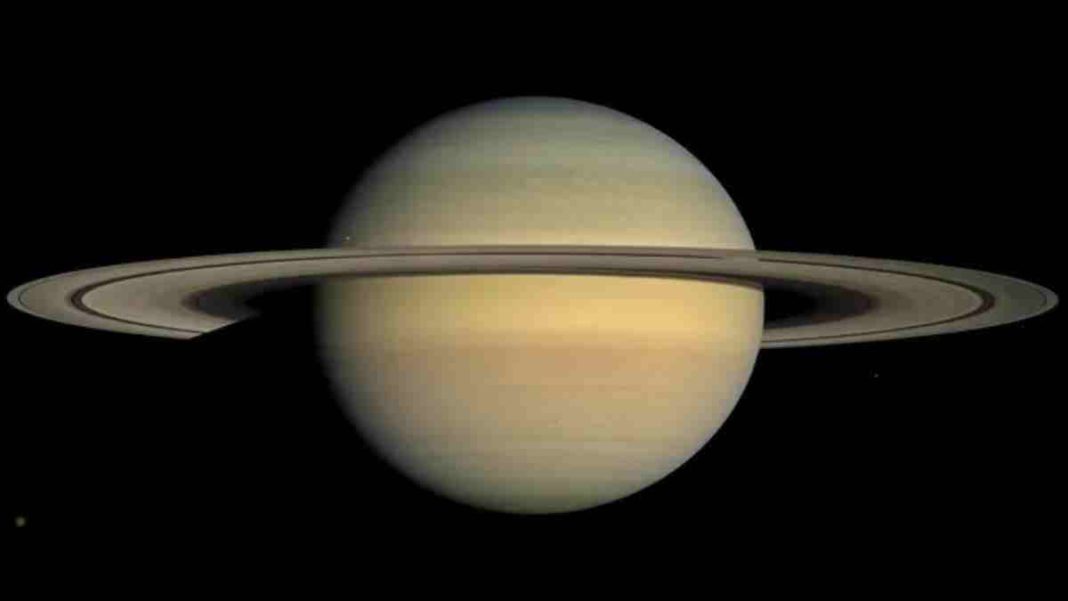UNITED STATES: Saturn, the magnificent gas giant of our solar system, is set to undergo a captivating celestial transformation in the coming years.
According to NASA, Saturn’s iconic rings are slowly but surely vanishing due to the relentless pull of the planet’s gravity, a process that may take millions of years to complete.
While their ultimate disappearance is a distant event in cosmic terms, a peculiar optical illusion is on the horizon for Earth observers, set to occur as early as 2025.
For centuries, Saturn’s rings have captivated astronomers and skygazers alike. First observed by Galileo Galilei in 1610, these stunning rings, composed of countless ice and rock particles, have been visible from Earth with basic astronomy equipment.
However, in just a few short years, an extraordinary alignment of Saturn with Earth will render these rings temporarily invisible to terrestrial observers.
In 2025, Saturn is projected to align edge-on with Earth, effectively concealing its iconic rings from view. This alignment will create an optical illusion akin to trying to spot a sheet of paper held parallel to the ground but hundreds of meters away at eye level. The rings, usually a prominent feature of Saturn’s appearance, will become challenging to discern during this time.
But fret not, for this unique phenomenon is fleeting when considering the vast timescales of the cosmos. Saturn takes approximately 29.4 Earth years to complete one orbit around the Sun. During this orbital journey, it gradually tilts, allowing Earth-based observers to witness the rings from different angles. By 2023, Saturn will have reached peak visibility once again, offering a spectacular view of this remarkable celestial feature. The tilt also enhances our ability to observe Saturn’s numerous moons.
The ultimate fate of Saturn’s rings remains a subject of scientific inquiry. Based on NASA’s estimates, the rings have less than 100 million years to exist, a mere fraction of Saturn’s age, which is nearly 4 billion years.
It is widely accepted in the scientific community that the rings are unlikely to be older than 100 million years to begin with. This underscores the transient and relatively short-lived nature of this extraordinary phenomenon within our solar system.
Also Read: Enceladus Unveiled: Saturn’s Moon Holds the Secrets of Life



